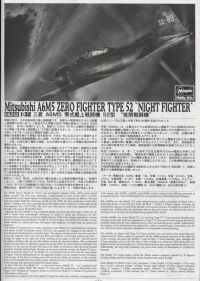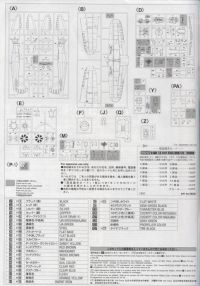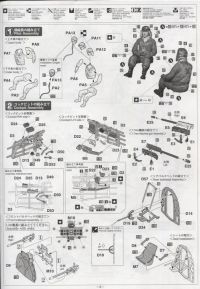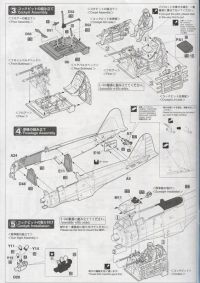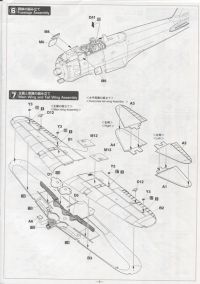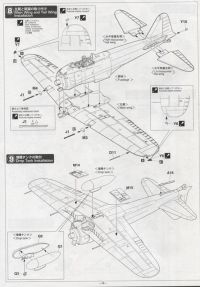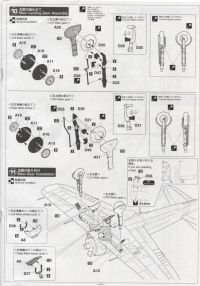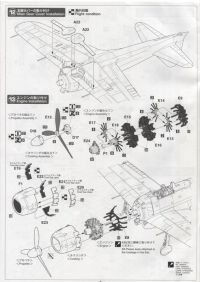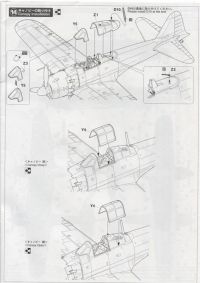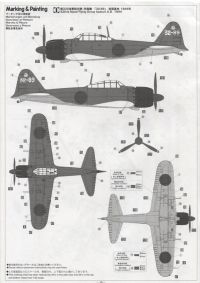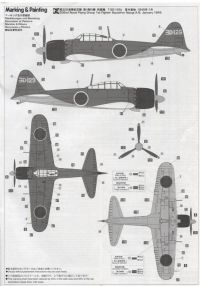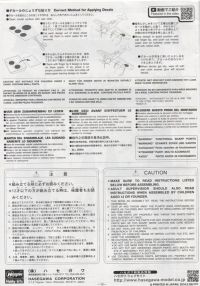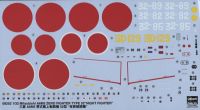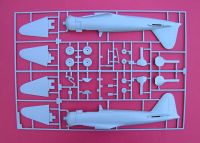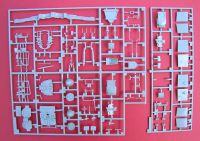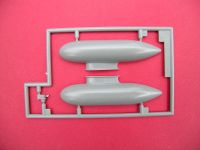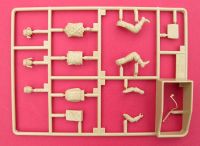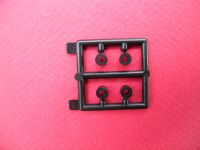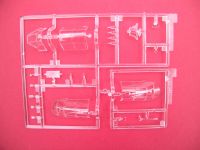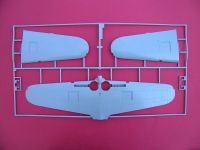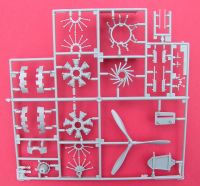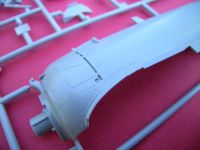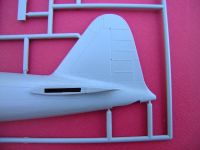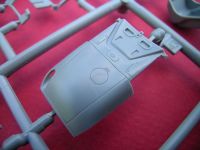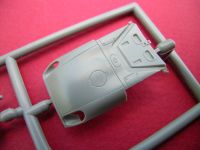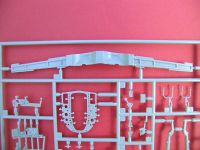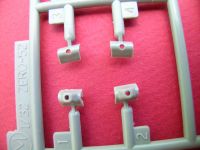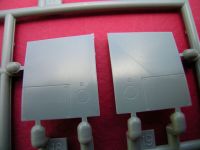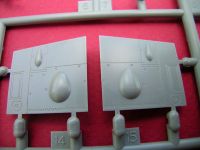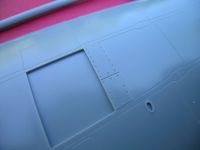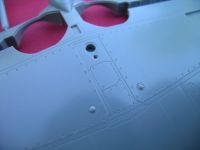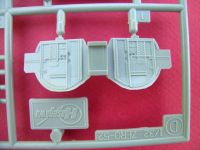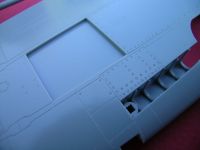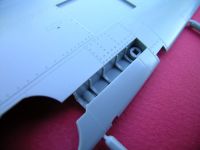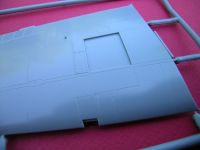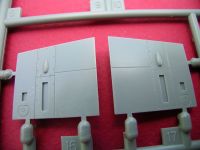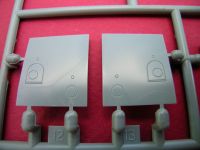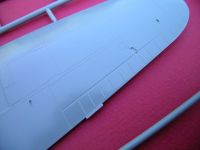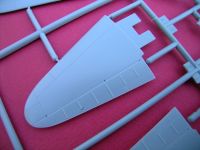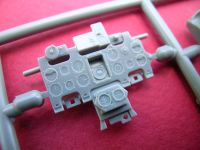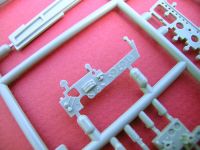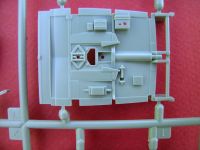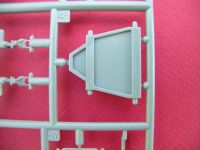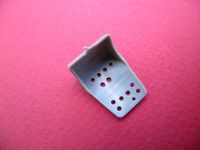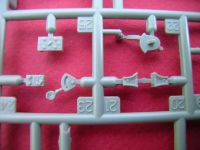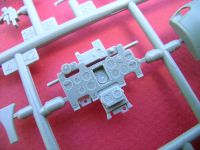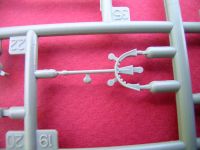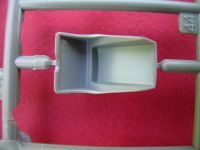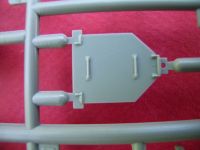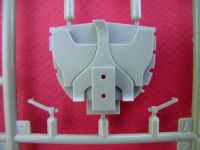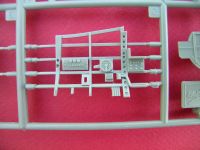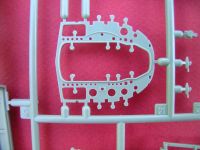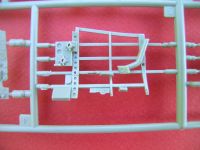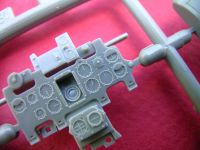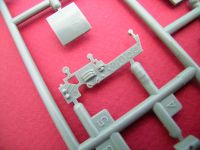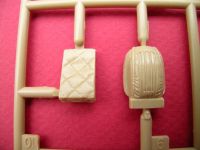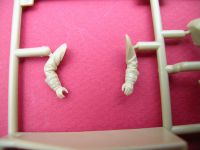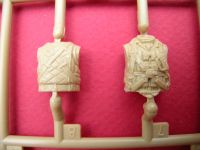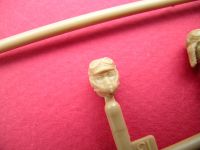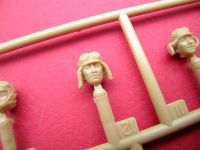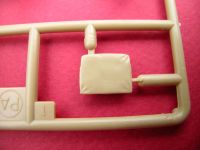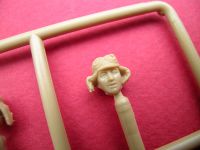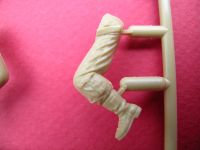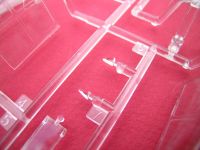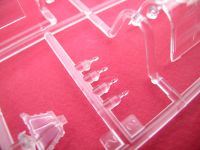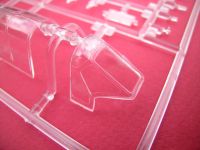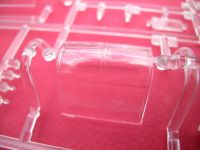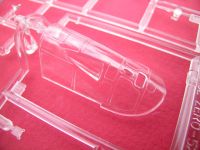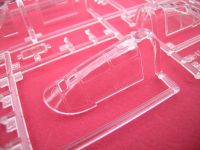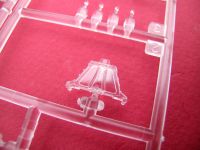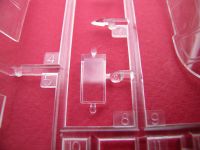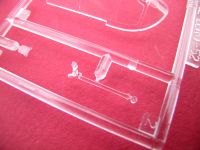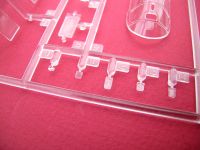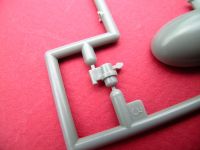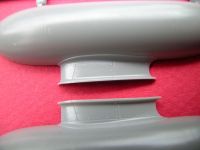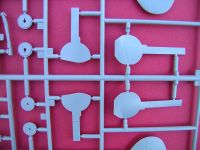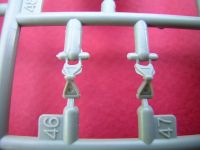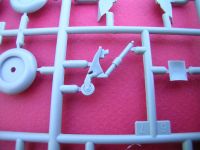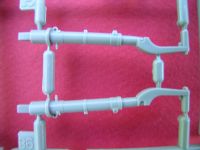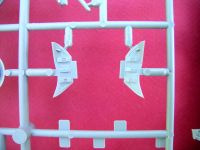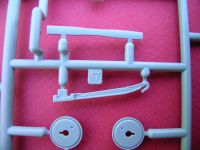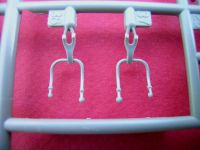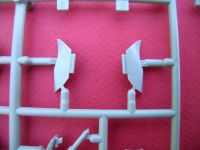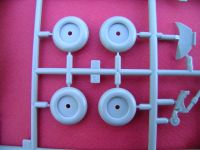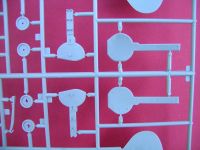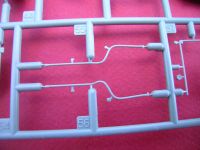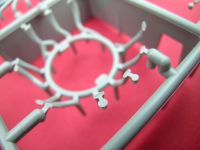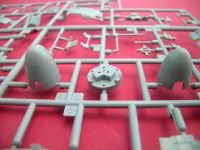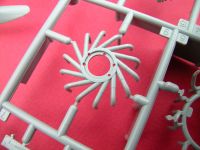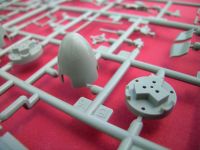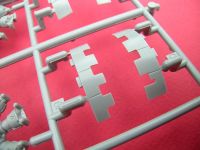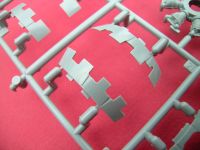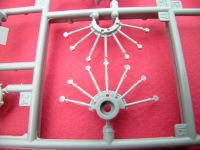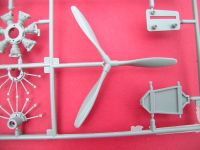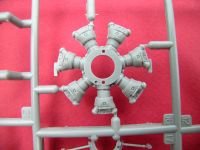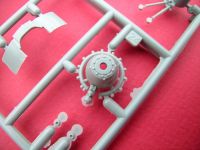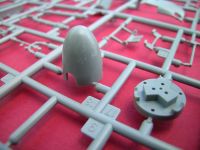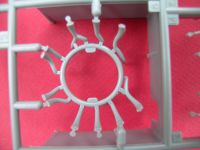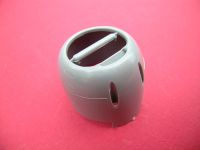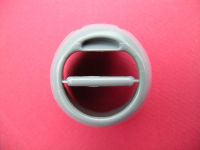Hasegawa | 08252: Mitsubishi A6M5 Zero Fighter Type 52 'Night Fighter'
Reviewed by Kevin Williams
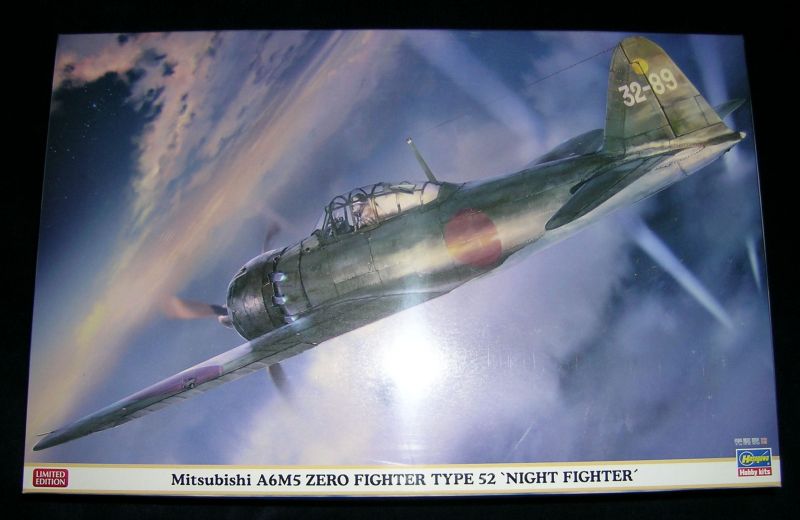
Hasegawa continues with the rather unpleasant habit of dumping several sprues (save for the clear parts), into one bag, leading, in this case, to scratched/abraded and broken loose pieces. Where pieces have broken loose, I've taken individual photos of them. I think it's also worth mentioning that some photos are indeed duplicated here, as they better help to illustrate separate areas of the air-frame.
(Since this is more of an in-box review than a build review, I have no photos of assembled sub structures, so my inputs should be considered more of an overview of the various areas I thought might be of interest, rather than an analysis of any accuracy issues, if indeed any are inherent.)
Note: No photo-etch is provided in this kit, so for things like lap belts and whatnot, those will need to be sourced elsewhere.
Instructions
Instructions are depicted in the typical Hasegawa pictographic way, making assembly a fairly straightforward process. Much to my happiness, a complete parts chart is provided within the provided instruction booklet, with non related parts to this particular version, being greyed out, leading me to conclude that the standard model 52 can also be built with the supplied parts, a nice option indeed. The usual disclaimers/warnings are also included; don't stick sharp objects in your eye, don't sniff the glue, don't feed the parts to your child, etc.
Decals
Markings are provided here for two air-frames (actually four), those being:
- A6M5 Model 52 #32-89, 332nd Naval Flying Group, 1944
- A6M5 Model 52 #∃D-129, 302nd Naval Flying Group, 1945
One oddity: While decals are actually provided for four different aircraft, markings/painting guide only shows two, white 32-89 and yellow ∃D-129, while white 32-82 and 32-85 are also provided, but not accounted for in instructions.
Decals appear to be in register, quite opaque, and well detailed, with plenty of stenciling, but not thin, not by a long shot. I'm assuming most folks will choose AM decals anyway, so this is probably no real big deal. No mention is made of where these decals were printed, but aside from the aforementioned "thick and chunky" issue, may work out well for some, and will probably prove more than adequate for those wishing to build either one of the out-of-box version(s) offered.
Major Kit Sprues
Offered up here, are a selection of major sprue components, with more detailed photos in the categories to follow. (Clearly visible, is the scratching/abrading, resultant from all of the sprues being dumped into one bag, a practice that I certainly don't understand or approve of.) While the surface damage that's been done using this method is certainly not insurmountable (a few swipes with some Scotch-Brite pads will certainly smooth things out just fine), it mars the otherwise gorgeous moldings.
There are, by my count, 12 sprues in total, one each of A, B, D, E, F, J, Q, Y, PA, Z, M and P-1.
Some sprues, though labeled as individual trees, are actually attached to other trees, thus the reason my photos only show 8 sprues, instead of 12.
Fuselage Major Components
Major fuselage components are represented above. Proportions and detailing are done to a very high level indeed. One note: it would seem that Hasegawa used a slightly deeper tooling for panel lines and rivet/fastener detailing here, and I highly approve of this approach. Even after several coats of paint, one should still be able to easily get a wash to snuggle down into these recessed areas. Either way, the tooling is some of the best yet that I've seen from this company, and that's saying quite a lot.
While most the fuselage is generally very nicely detailed, the one exception to this is the more or less complete lack of general air-frame rivet detail (same with the wings and stabilizers). When compared to the comparable Tamiya offering, the Tamiya approach (at least to me), is way more visually interesting, and also offers up the possibility of some great accenting washes in those air-frame rivet details, which the Hasegawa kit does not. Given this particular difference alone, my preference here would be for the Tamiya approach.
Wings
Again, wings are very well detailed, and to a high standard, capturing even ever so slightly raised panels, as well as very delicate screw head type fasteners; very nice indeed.
There are no wing guns as such, just barrels, representing the type 99 20mm weapons. While these provided barrels are quite acceptable (and hollowed on the muzzle ends), Master makes some gorgeous type 99 turned brass barrels that might serve well as an alternative to those seeking one.
Wheel well openings and details are really pretty well done, for those that care about such things (I do not).
Two different sets of wing inserts (upper and lower), are provided for various armament configurations, as well as two different sets of wing armament fairings/inserts.
The Cockpit
All in, the 'pit would appear to build up into quite an acceptable representation of the real McCoy, and the detailing throughout out is really quite nice indeed. No P.E. belts are included, so those will need to be sourced elsewhere. Detailing on the 'pit, rivals (in my opinion) that of the Tamiya kit, and with some decent painting, has the potential to undoubtedly look quite excellent.
Pilot Figure
The kit includes one seated pilot figure, that, all things considered, looks very nice, with three optional heads that also look pretty good, with two of those heads in particular, actually looking Japanese, and otherwise, a very acceptable figure.
Canopy & Clear Parts
The clear parts are exactly that, crystal clear. Clarity is astounding, as the photos readily attest. Included in the clear parts, are all four wing teardrop shaped ID lights (nice), as well as the upward firing 20mm, specific to this variant. The 20mm cannon barrel is not hollowed on the muzzle end. Also, the aft canopy section, again specific to this variant, has a scoop affair on the port side (where the 20mm barrel passes through), and this scoop has what appears to be an ejector pin mark smack in the middle of it (on the interior), which will be covered by the canopy paint, so no big deal there.
Fuel Tank
One centerline fuel tank and mounting pylon is provided, and looks quite acceptable to my eye.
Landing Gear, Wheels & Tires
Landing gear is actually reasonably well detailed. Two sets of main gear doors are provided, one set for in-flight display, another for parked display. Both sets of doors have ejector pin marks on the interior surfaces, no big deal for the in-flight mode, but will need to be dealt with for parked versions. The one piece tail wheel assembly also looks good. I'd prefer a separate tire/wheel here for ease of painting, but that's just me.
Engine/Prop/Spinner/Cowl
A few things here worthy of note; engine, as-is, looks as if though it will build up to a very nice representation of the Sakae powerplant for the Zero. Given the multiple variation nature of the tooling, both long and short prop spinners are provided. Also both open and closed cowl flaps are offered, a real nice touch that I, for one, genuinely appreciate. Exhaust collectors are molded with opened ends, so "hollowing them out", won't be necessary.
The one-piece cowl assembly (quite nice), has some remnants of the slide molding process used, but with some Scotch-Brite or similar, will be an easy cleanup, so again, no big deal.
As I've seen with some other Hasegawa kits, multiple sprues being dumped into one bag, have left some scuff marks on some parts, most notably here, the prop spinners, but certainly nothing insurmountable.
There's a bit more than the normal amount of molding flash present on this kit, but given that flash, mixed with liquid cement, makes an excellent filler, I really see this as no big deal.
Summation
All in all, I think this is a very commendable effort from Hasegawa, and I am very pleased with what I've found so far. I'd also like to make the point that the contents within, constitute the great kit quality that one might tend to expect from Hasegawa, a handsome kit indeed, and is quite desirable as a consequence, as well as being another fine A6M Zero on the market, at least in this particular scale, and in my personal view.
This kit is highly recommended by this reviewer, for overall aesthetic appeal, and for giving us another choice by which to display the brute force, and yet elegant appearance of this truly iconic aircraft.
Acknowledgment
Many thanks to HobbyLink Japan for the review kit, which can be purchased at the following link:
Hasegawa 1/32 Mitsubishi A6M5 Type Zero Fighter Model 52 "Night Fighter"
© Kevin Williams 2018
This product is available from the following LSP sponsors
This review was published on Monday, June 04 2018; Last modified on Monday, June 18 2018

